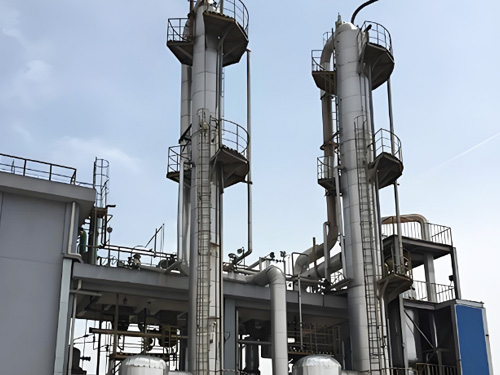
In the petrochemical industry, the fluidity and processing performance of wax oil are critical indicators. As market demands continue to evolve, non-hydrogen dewaxing technology for wax oil has gradually become an important method for treating wax oil. This technology not only offers significant advantages in improving product quality but also shows great potential for future development. This article explores the advantages and future development trends of non-hydrogen dewaxing technology, helping enterprises understand its potential and application prospects.

I. Main Advantages of Non-Hydrogen Dewaxing Technology for Wax Oil
1.Efficient Dewaxing
Non-hydrogen dewaxing technology effectively lowers the freezing point of wax oil, improving its fluidity. Compared with traditional hydrogen dewaxing technology, this method does not require the use of hydrogen, simplifying the process and reducing production costs.
2.Energy Saving and Environmentally Friendly
The technology uses cooling dewaxing methods with relatively low energy consumption. Since it does not involve hydrogenation reactions, it reduces energy consumption and greenhouse gas emissions, helping to achieve environmental goals and meet sustainable development requirements.
3.Improved Product Quality
Dewaxed wax oil has significantly improved fluidity, enabling the production of high-performance petroleum products suitable for low-temperature environments. This advantage is critical for the production of lubricating oils, fuel oils, and other chemical products, meeting the needs of various working conditions.
4.Simplified Process
The process of non-hydrogen dewaxing technology is relatively simple and does not require complex hydrogenation reactions or catalyst treatments. The simplified process not only reduces equipment investment and maintenance costs but also improves production stability and reliability.
5.Wide Applicability
This technology is applicable to various wax oil treatments, including petroleum refining, lubricating oil production, and chemical product manufacturing. It can provide efficient dewaxing treatment in different application scenarios, enhancing its universal applicability.
II. Future Development Trends of Non-Hydrogen Dewaxing Technology for Wax Oil
1.Technological Innovation and Upgrades
With advancements in science and technology, non-hydrogen dewaxing technology will continue to innovate and upgrade. New cooling materials, optimized dewaxing equipment, and advanced control systems will improve the efficiency and stability of the technology, achieving lower freezing points and higher product quality.
2.Intelligent and Automated Systems
Future non-hydrogen dewaxing technology will increasingly focus on intelligence and automation. By incorporating advanced sensors and data analysis techniques, the technology will enable real-time monitoring and intelligent adjustment of the production process, enhancing production efficiency and operational safety.
3.Energy Efficiency and Environmental Protection
Against the backdrop of increasing global environmental awareness, non-hydrogen dewaxing technology will place greater emphasis on energy efficiency and environmental protection. The development of low-energy consumption and low-emission equipment and processes, in line with sustainable development requirements, will become a crucial direction for technological advancement.
4.Application of High-Performance Materials
Future technological development will increasingly use high-performance materials, such as new cooling media and low-temperature-resistant materials, to enhance the operational efficiency and durability of the equipment. These materials will improve the performance of the equipment and extend its service life.
5.Diversified Market Demand
As market demands for high-performance petroleum products continue to change, non-hydrogen dewaxing technology will continuously adapt to new needs. Future technology will be more flexible and able to meet the special requirements of different fields, such as lubricating oils and fuel oils for extremely cold environments.
6.Global Application
The application of non-hydrogen dewaxing technology will gradually expand to the global market. As the technology matures and equipment costs decrease, more countries and regions will adopt this technology to meet local industrial demands and environmental standards.
III. Conclusion
Non-hydrogen dewaxing technology for wax oil has secured a significant position in the petrochemical industry due to its advantages in efficient dewaxing, energy savings, environmental friendliness, simplified processes, and broad applicability. In the future, this technology will continue to develop in areas such as intelligence, energy efficiency, the application of high-performance materials, and market diversification, providing better solutions for enterprises. Understanding the advantages and future development trends of non-hydrogen dewaxing technology will help companies grasp the direction of technological development, achieve efficient production, and pursue sustainable growth.
We hope this article offers valuable insights and assists you in making informed decisions when choosing and applying non-hydrogen dewaxing technology. Should you have any questions or wish to discuss further, please feel free to contact us!



